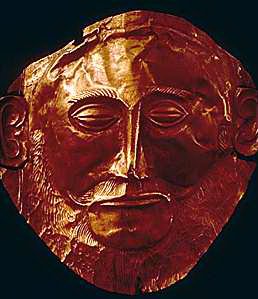The
Age of 1000 Kings
By c.1950
BCE Andrea, then known as "Terwelt", was dotted with over 900
small fortified villages. From these villages, with their bronze
smiths, weavers, and other craftsmen, petty kings and their war
bands ruled over the surrounding peasant farmers. These kings,
known as Rahaxi, spend most of their time raiding other kingdoms
for loot and glory. Combat by this time had become almost ritualistic,
and despite saga full of hero slaying thousands of men, very few
warriors died in these  raids.
The Rahax and his war band were supported by the taxes the exhorted
from the peasants, usually in the form of spice, wheat, cotton,
or other goods. The ownership of cattle was restricted to the
nobles, and was the primary method of measuring wealth. In addition,
only nobles and warriors could hunt in the forests or plains.
raids.
The Rahax and his war band were supported by the taxes the exhorted
from the peasants, usually in the form of spice, wheat, cotton,
or other goods. The ownership of cattle was restricted to the
nobles, and was the primary method of measuring wealth. In addition,
only nobles and warriors could hunt in the forests or plains.
It was a
much different story on the borders of the central highlands.
Here poor farmers and minor Rahaxi eked out an existence based
around herding sheep and goats, and the mining of copper to trade
with the coastal plains lords. These Rahaxi never developed the
sort of power over the peasants as their coastal and plains cousins
did. Life was much to great a struggle, and the farmers retained
their historic status of freemen. Early forms of democracy were
in practice in some areas, and every able bodied man knew the
arts of war. This was primarily due to the aborigionals, particularly
the Tobaganak tribesmen, who constantly raided the Achean settlements.
While science
did not progress much in the 700 year era of the 1000 Kings, art
reached new hights. Bronze, gold, and silver work rivals the masters
of modern times. Advanced stone cutting techniques also allowed
the construction of massive dolmen, many carved with amazing life
like renderings of wars and legends. It was also during this time
that the modern glyphic script came into use, and vellum became
the main medium of recording information. It is a testament to
the sheer amount of work produced that any of it survives today,
nearly 3000 years after it was written.
In 1191 BCE,
the world of the Achean came to an end. Imagine the shock of the
petty lords of the Sun Coast when they woke one morning to see
the Shangal fleet, 500 ships strong, upon the horizon.

